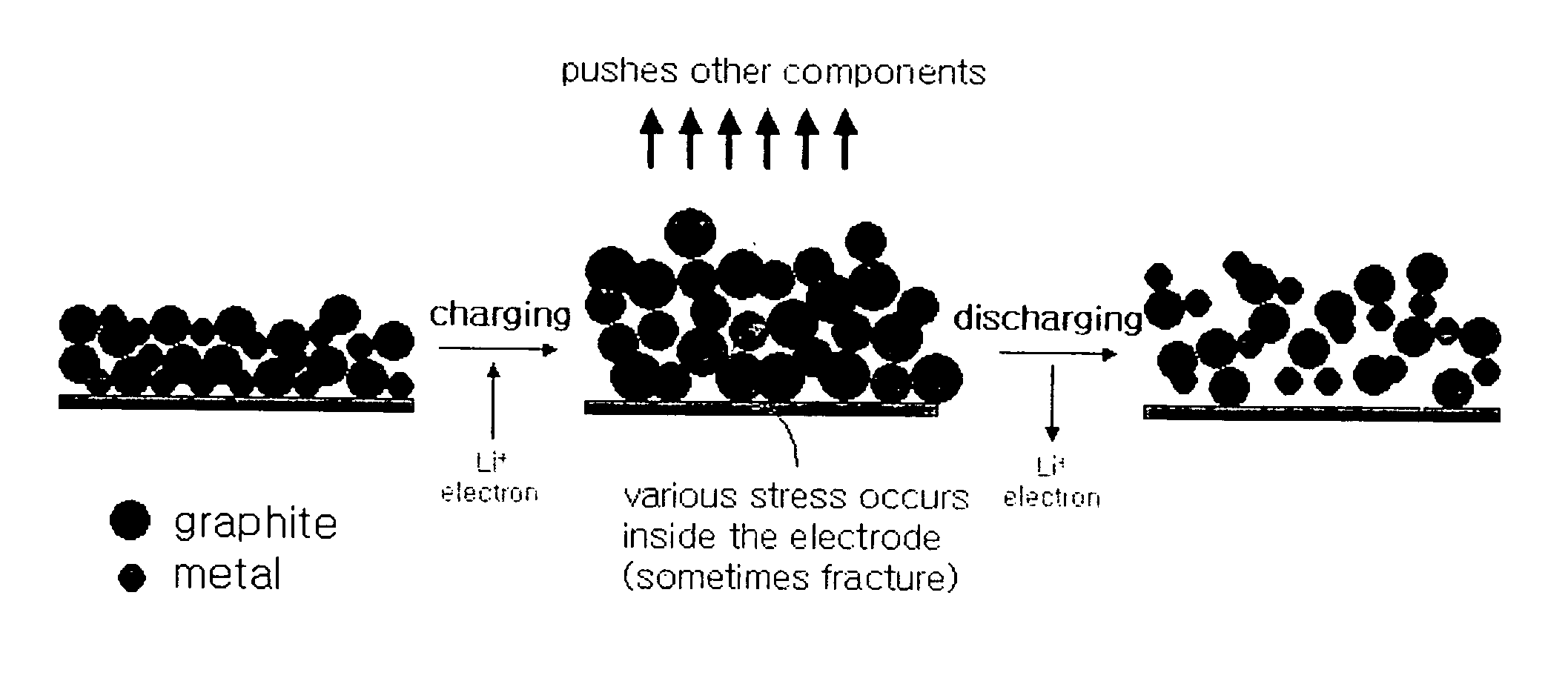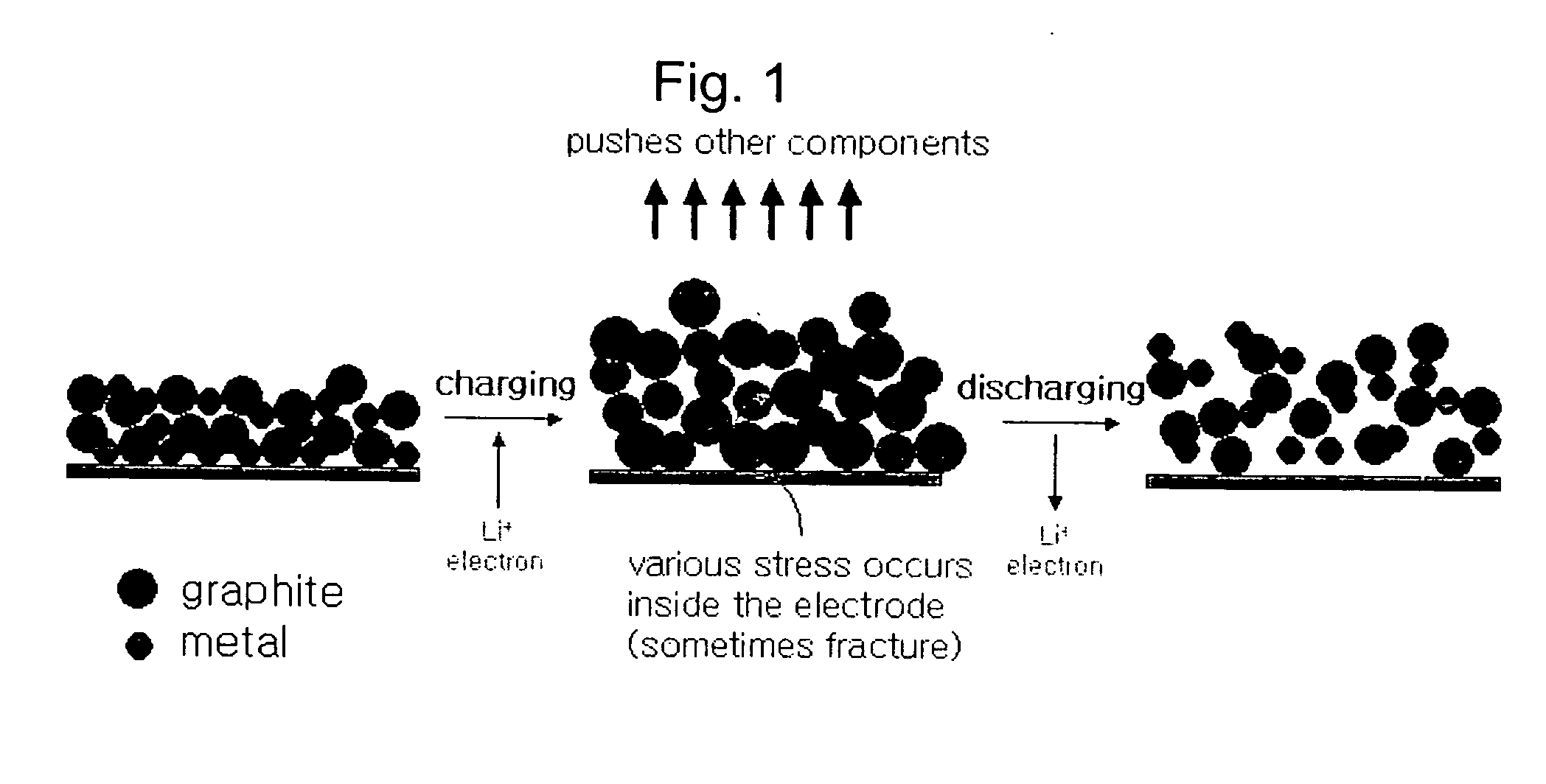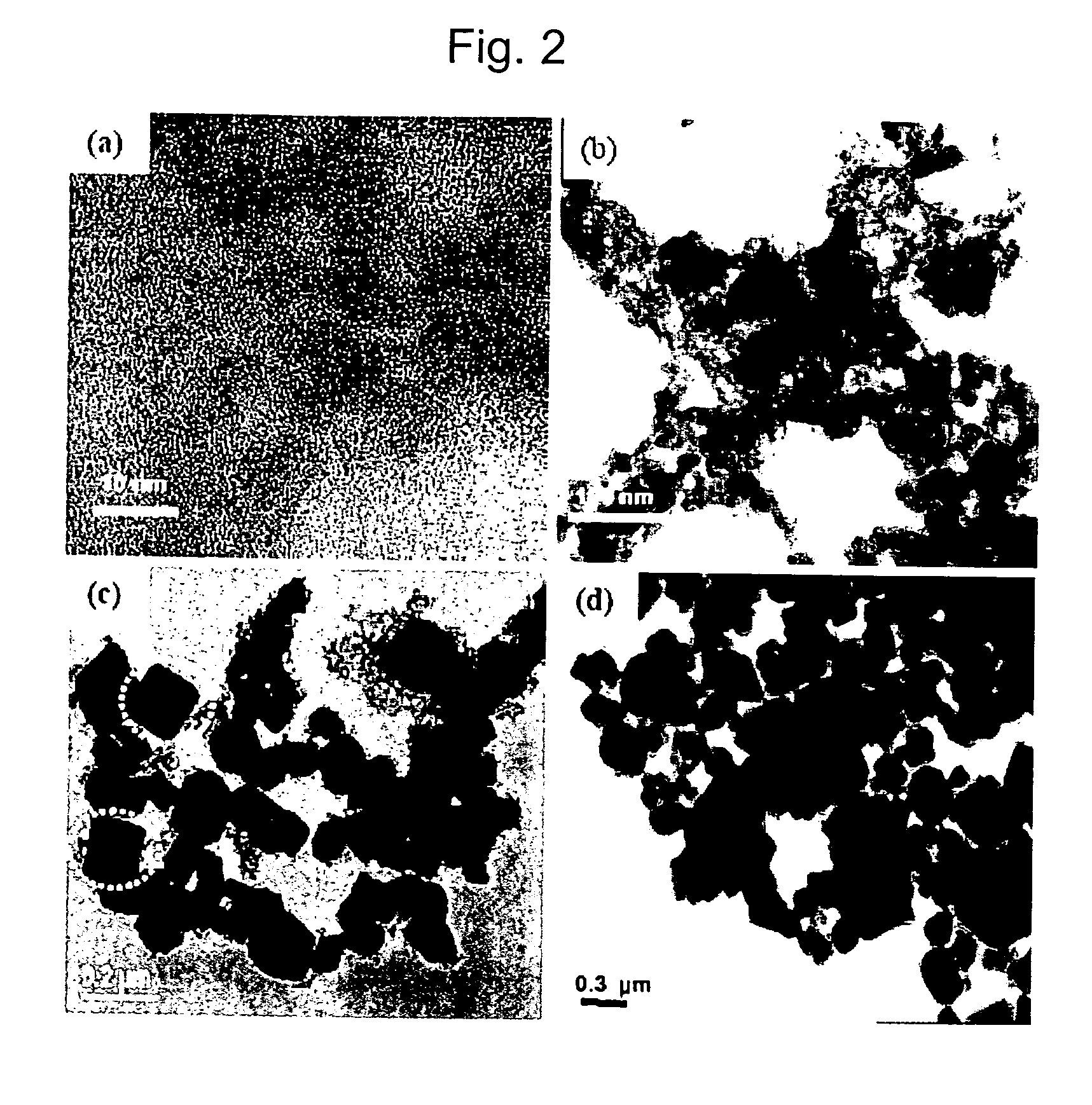Anode active material, manufacturing method thereof and lithium battery using the anode active material
a lithium battery and active material technology, applied in the manufacturing process of electrodes, cell components, electrochemical generators, etc., can solve the problems of short cycle life of batteries, irreversibility is a problem, etc., and achieve excellent cycle lifetime properties and high capacity
- Summary
- Abstract
- Description
- Claims
- Application Information
AI Technical Summary
Benefits of technology
Problems solved by technology
Method used
Image
Examples
example 1
[0127] In order to synthesize Sn nanopowder coated with 2,4,6-tri(2-pyridyl)-1,3,5-triazine, 0.7 ml of tetraacetyl ammoniumbromide was added to a mixed solution of 0.9 mmol of SnCl4:5H2O and 15 mL of CH2Cl2 to obtain a first solution. In addition, 4.8 mmol of 2,4,6-tri(2-pyridyl)-1,3,5-triazine was added to CH2Cl2 and stirred to obtain a second solution. The first and second solutions were mixed and stirred for 20 minutes. Then, 18 mmol of NaBH4 was added as a reducing agent to the resulting mixture and stirred for 1 hour in an argon atmosphere. The Sn nanopowder capped with precipitated monomer was washed more than 3 times using water and acetone and then vacuum dried.
[0128] According to part (a) of FIG. 2, a transmission electron microscopy (TEM) image of the Sn nanopowder synthesized above is illustrated. Referring to FIG. 2, the average diameter of the tin-based nanopowder was 10 nm.
[0129] Then, 1 g of the tin-based nanopowder, 0.3 g of a polyvinylidene fluoride (PVDF, KF1100,...
example 2
[0130] A Sn nanopowder was manufactured in the same manner as in Example 1, except that 2.4 mmol of 2,4,6-tri(2-pyridyl)-1,3,5-triazine-based used as a capping agent.
[0131] Part (b) of FIG. 2 is a TEM image of the Sn nanopowder synthesized above according to Example 2. Referring to FIG. 2, the average diameter of the tin-based nanopowder was 20 nm.
[0132] Methods of manufacturing cells for electrochemical evaluation and evaluating the same were the same as in Example 1.
example 3
[0133] Sn nanopowder was manufactured in the same manner as in Example 1, except that 4.8 mmol of 2,4,6-tri(2-pyridyl)-1,3,5-triazine-based was used as a capping agent.
[0134] Part (c) of FIG. 2 is a TEM image of the Sn nanopowder synthesized according to Example 3. Referring to FIG. 2, the average diameter of the tin-based nanopowder was 200 nm.
[0135] Methods of manufacturing cells for electrochemical evaluation and evaluating the same were the same as in Example 1.
PUM
| Property | Measurement | Unit |
|---|---|---|
| particle size | aaaaa | aaaaa |
| charge capacity | aaaaa | aaaaa |
| charge capacity | aaaaa | aaaaa |
Abstract
Description
Claims
Application Information
 Login to View More
Login to View More - R&D
- Intellectual Property
- Life Sciences
- Materials
- Tech Scout
- Unparalleled Data Quality
- Higher Quality Content
- 60% Fewer Hallucinations
Browse by: Latest US Patents, China's latest patents, Technical Efficacy Thesaurus, Application Domain, Technology Topic, Popular Technical Reports.
© 2025 PatSnap. All rights reserved.Legal|Privacy policy|Modern Slavery Act Transparency Statement|Sitemap|About US| Contact US: help@patsnap.com



